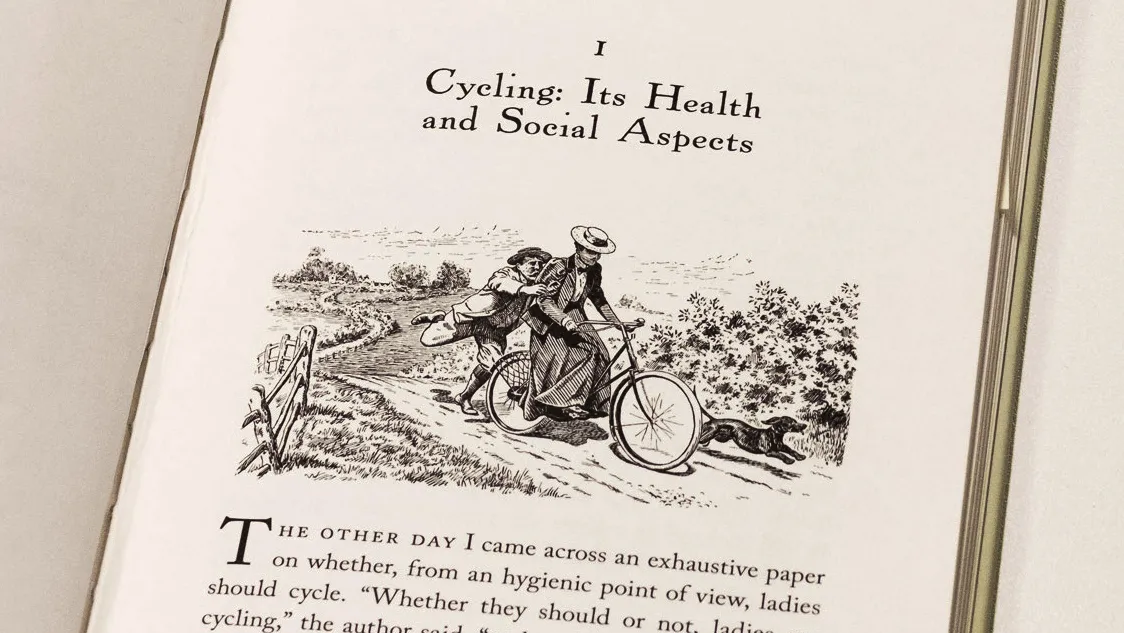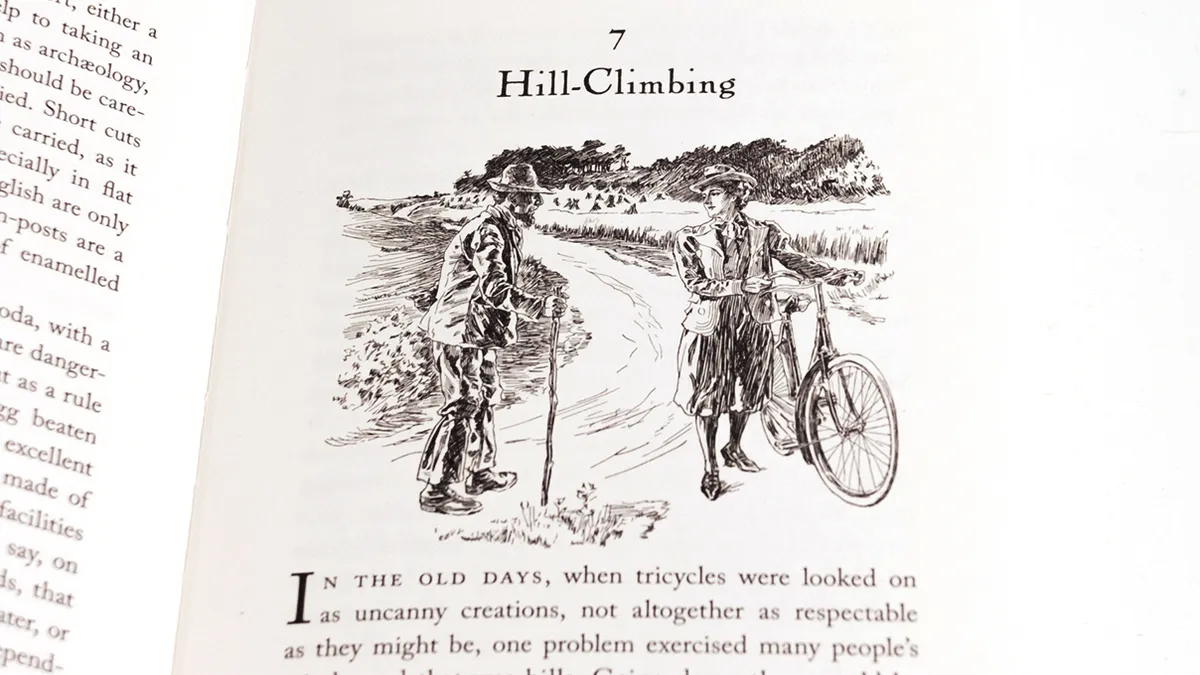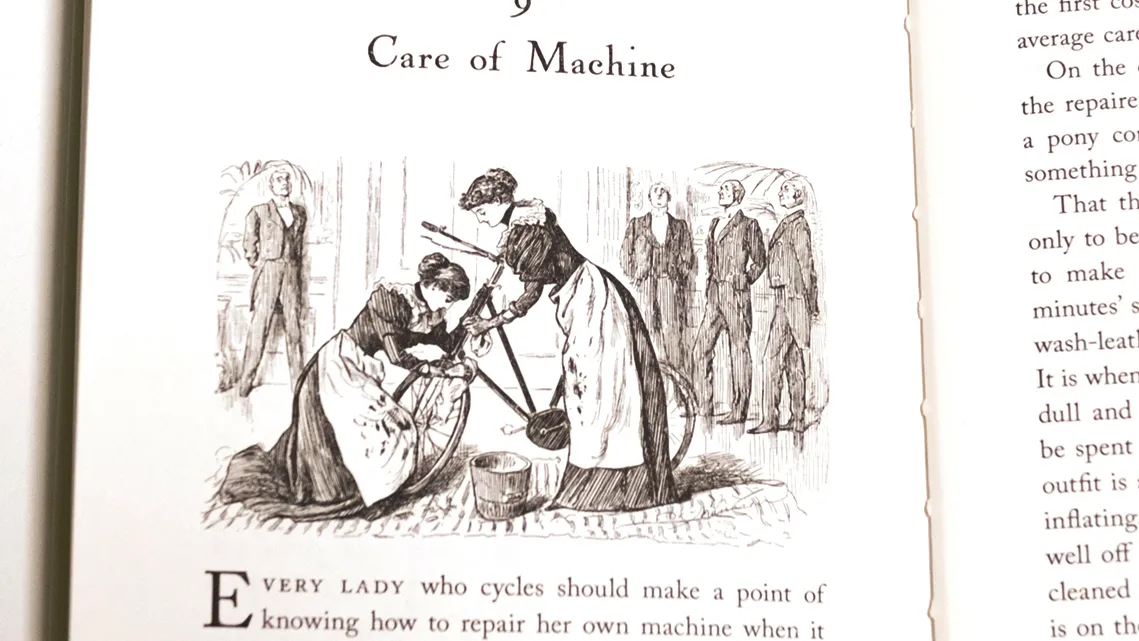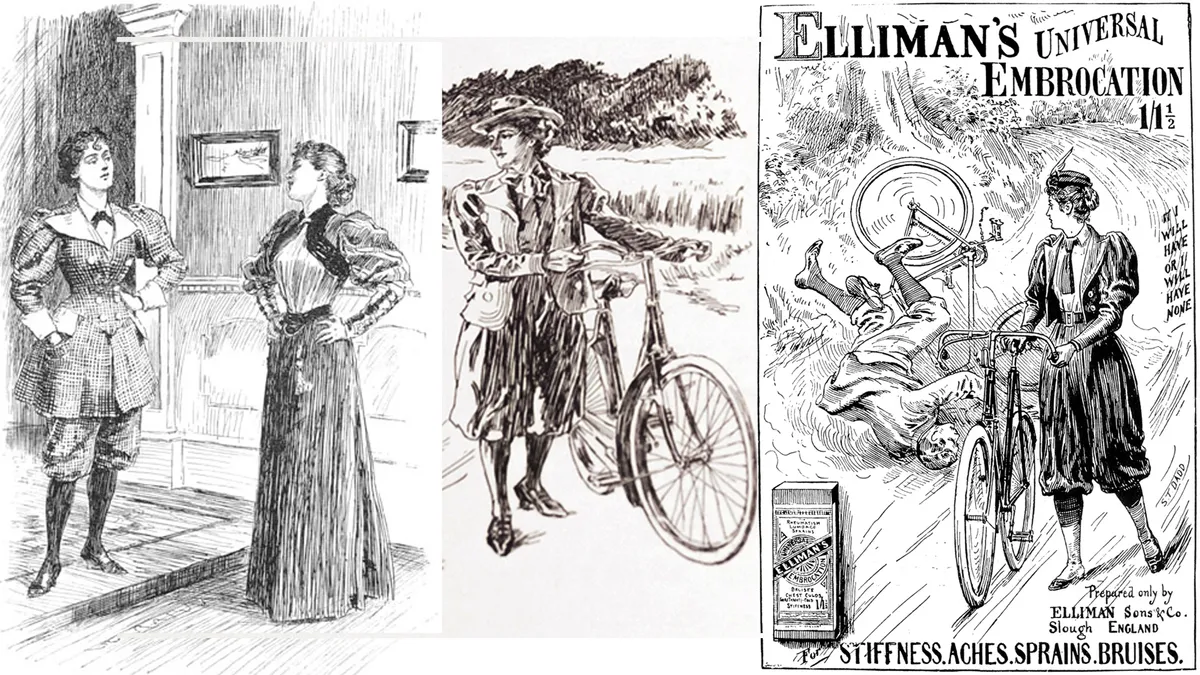For as long as cycling has existed there have been guides on how it should be done properly, what one should wear, and indeed how the serious cyclist should conduct themselves. Some of the advice given in the early days of cycling is still remarkably relevant. However, much of it is amusingly outdated to our modern sensibilities.
- Best women's road bikes for 2018: 9 of the best
- Should I wear underwear under padded shorts?
- Lizzie Deignan shares her top tips for cycling while pregnant
Lest one should think otherwise, women have been cycling since the very beginning of the activity and the following helpful hints and tips for the female cyclist come courtesy of Miss F.J. Erskine, a keen cyclist, from her book Lady Cycling: what to wear and how to ride. The book was published in 1897 and is reproduced here courtesy of British Library Publishing.
Perhaps surprisingly, a great deal of the advice is still relevant and holds true today with some coming full circle, such as the advice to wear "wool above, wool below, wool all over… Cotton shirts for any long rides are, in an hygienic sense, impossible", which echoes the trend for Merino cycling garb. However, other tidbits of wisdom are, shall we say, a little outdated.
Here follows a selection of chapter titles and extracts that indicate the views of the past.
1. Cycling: Its Health and Social Aspects

"The other day I came across an exhaustive paper on whether, from an hygienic point of view, ladies should cycle. 'Whether they should or not, ladies are cycling,' the author said, 'and so far the results seem to be extremely beneficial.' On no point, however, has a hotter controversy raged."
For park riding, we must have an artistically cut skirt, artfully arranged to hang in even portions each side of the saddle
This is the opening of the book and ah, ladies and gentlemen, isn't it interesting that while the physical and mental health benefits of cycling today are well recognised, there have always been strongly held opinions about whether women should ride, what they should ride, where they should ride and how they should ride.
Interestingly, when this book was written in the 1890s it was during a time that's become known as the 'bicycle craze'; a period when huge numbers of women took up cycling, allowing them to travel freely over greater distances. Bicycles were even christened 'freedom machines' by American feminist Susan B. Anthony.
While the book is extremely supportive and positive on the subject of women cycling in general, it repeatedly warns against pushing things too far. "One must not push one's limits", warns Miss Erskine, lest what should be a pleasurable and beneficial pastime become harmful, no less. Therefore it should come as no surprise at all that Miss Erskine is firmly against women racing.
"Women ought not to race, if they have the slightest regard for their own health; and if they do, it is suicidal policy, which is bound to end in disaster — I say nothing of its influence on the sport. Cycling now is so firmly rooted amongst the sane members of the community, as an easy and cheap form of locomotion, that the racing woman will only hurt herself by her action."
Fortunately, there have always been women happy to disregard such advice, such as Annie Londonderry (or Annie Kopchovsky, her real name). Born in 1870, she became the first woman to cycle around the world — though there were a lot of steam ships and trains involved.
In 1894, aged 24, she set off from Massachusetts on a single gear, fixed-wheel bike with no brakes carrying a change of clothes and a pistol. She rode in Paris, Singapore, Hong Kong, Alexandria and Nagasaki before returning to the US, completing the trip in 15 months.
2. Cycling Dress for Town and Country

Today, it's possible to find all the Lycra your heart could desire in pretty much every shade, not to mention more and more mountain bike and touring kit for women.
More choice, more technical fabrics and features and better designs mean that getting kit that fits, performs well, feels comfy and looks good has never been better, but spare a thought for the cycling sisters of old and what they had to wear.
There are so few facilities for getting anything to drink in a country ride that it is generally best to carry a flask of claret and water
"Some wise people say that corsets should be discarded for cycling," comments Miss Erskine on that very subject. "This is not correct. There should be no approach to tight-lacing, but a pair of woollen-cased corsets afford great support; they keep the figure from going all abroad, and protect the vital parts from chills."
She continues: "For park riding, we must have an artistically cut skirt, artfully arranged to hang in even portions each side of the saddle; and fashion decrees, what common-sense does not, that a blouse of silk or cotton, belated, and with huge puff sleeves, is en règle for our bodies to be arrayed in."
Happily, with the increase in popularity came more garments and styles better suited to actually riding a bicycle, such as bloomers and knickerbockers, which allowed women to straddle a bike without catching their skirts in the drivetrain or wheels.
"It is essential in cycling to have well-cut knickerbockers in lieu of skirts. It is best to have them lined with leather as for riding on horseback. They should be made to buckle at the knee, but loosely — no tight bands are allowed in cycling. In the same way, suspenders should invariably be used to secure the stockings."
While we agree about not having "tight bands", we're certain that the all-over lycra of the modern roadie would have been a scandalous outrage for the cyclists of the nineteenth century, not to mention the bare legs of mountain biking woman.
3. How to ride and how not to ride

"It is a great mistake to ride every hill, even if it be a moderate one. Some days it may be possible to do hills easier than on others, but when the effort becomes in the least severe the rider will be far better walking. It may be taken as a general rule that few hills are worth riding unless they can be done easily. To strain and push, as many do, is mostly harmful."
Nowadays, most cyclists would disagree and while everyone has their own individual preferences and feelings as to which hills they are prepared to tackle, there is no doubt that a little hill climbing is good for a body... and of course, there's always the downhill to enjoy.
"Ladies should not fly down hills feet up."
Oh.
4. Touring at Home and Abroad

The sheer distances you can travel on a bicycle are one of the biggest draws to the activity as a form of transport and exploration. It opens up the world and allows you to explore and discover new places, not to mention go on a grand old adventure.
The same was true in the 1890s, with women cycling farther afield to visit friends, explore and travel, though, as ever, Miss Erskine is quick to recommend women don't overdo it.
"It is highly important that ladies especially should only go moderate distances at first; any day's work over forty miles is too much."
The women of the Adventure Syndicate might beg to differ; a group of female cyclists including long-distance racers, Leigh Craigie, Emily Chappell and Ricki Cottar. Between them they have completed some epic challenges, such as the Highland 550 and the Tour Divide.
As well as completing epic challenges, they are dedicated to encouraging more women into long distance cycling and introducing girls and young women to the adventure of bikepacking, camping and racing.
Fuelling your cycling is also important on long distance adventures, and nutrition advice is something that we dedicate a serious amount of page space to on BikeRadar. However, today's high-tech energy gels and nutritionist-designed meal plans are a far cry from the advice given when this book was written.
"Egg beaten up in milk, with a teaspoonful of whisky, is excellent when a rider is at all done up. There are so few facilities for getting anything to drink in a country ride that it is generally best to carry a flask of claret and water, or some equally sound beverage, and be safe and independent. Milk alone, when taken in quantities, is dangerous if the rider be very hot."
5. General Hints

Riding bicycles with other people is one of life's great pleasures and the number of women joining mountain biking and road cycling clubs is rising steadily. There are also increasing numbers of women's groups and rides on offer, often organised through social media and at grass-roots level to encourage more women into the sport and provide a friendly and supportive environment.
Find the right club and you'll find a group of like-minded individuals that will help you push your riding to the next level.
Miss Erskine, on the other hand, is not a fan of the club scene:
"Many ladies' clubs are now being started, and, from some points of view, those who are alone in their rides might do worse than join them. But women are not, as a rule, fitted for club life. They are not so broad-minded as men — they have an infinity of social rings, one within the other, and when in authority are apt to be arbitrary and tyrannical."
Safety is another consideration for the female cyclist of the 1890s. Attitudes to women cycling, and indeed to women in general, were certainly less positive than they often are today in many (but not by any means all) parts of the world.
"Riding in company is a certain safeguard against annoyance from tramps, though I think a lady, inconspicuously dressed and riding quietly alone in daylight, has little to fear. However, in the vicinity of large manufacturing towns the rowdy element may at times annoy ladies riding alone."
We like the positivity of this message, rowdy elements notwithstanding.
Advice for lady cyclists today

While some of the advice within this book is amusingly outdated, what I find fascinating is firstly a book like this existed that was encouraging women to go out and ride, tour and travel to different countries under their own steam and even by themselves, and what's more, giving a whole host of practical information to help them on their way.
This advice included guidance on what bike to buy, how to set said bike up and what to bring on longer rides. In fact, you could think of it in some ways as an early printed version of BikeRadar.
- Article updated 26 June 2018


